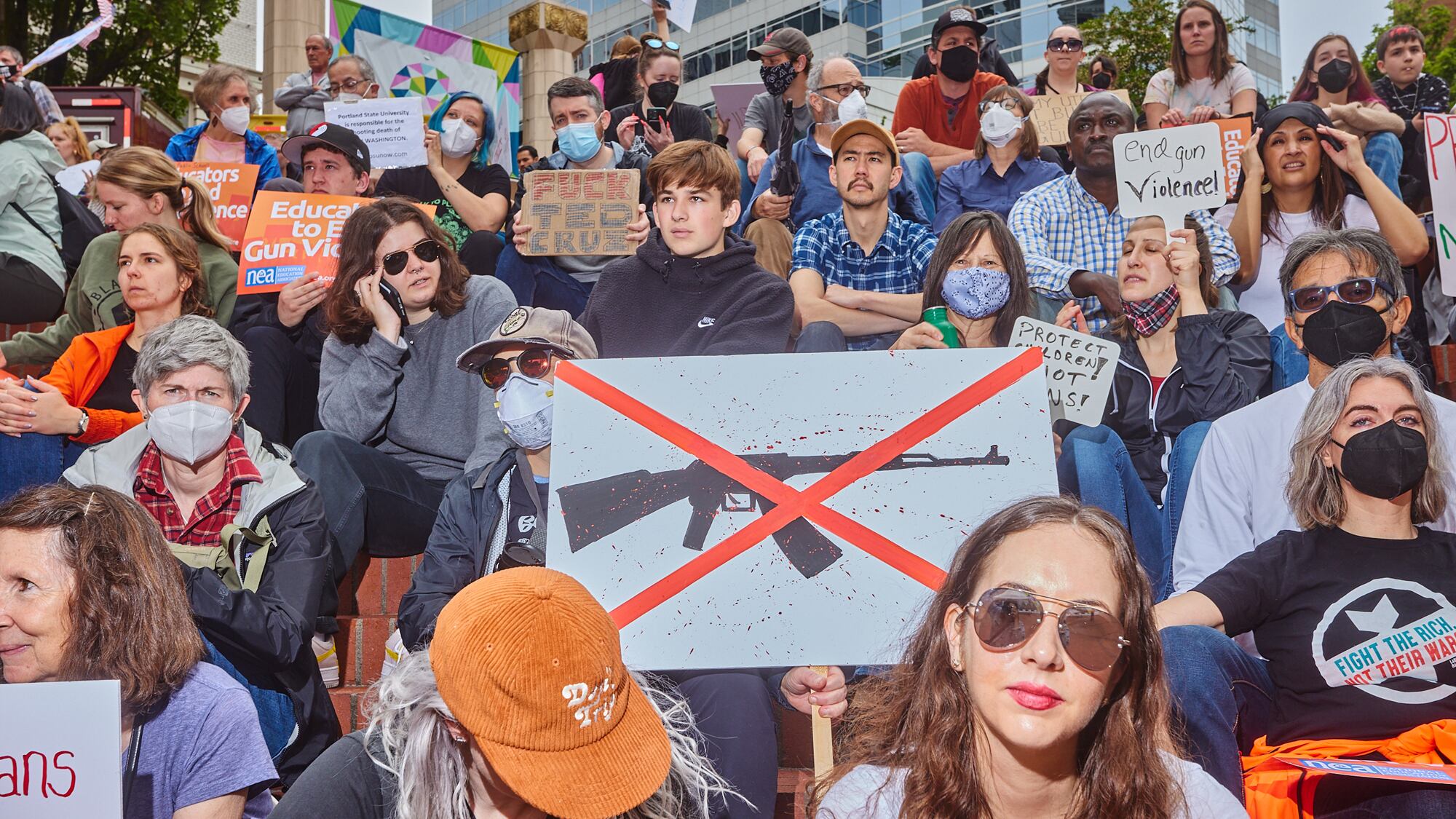As Congress negotiates a gun control bill and Oregon religious groups gather signatures for a ballot initiative to create gun permits and limit the sale and manufacture of large-capacity magazines, the aftermath of a Texas school shooting is dividing Americans.
In Oregon, the most politically fraught moment on gun policy came early this month as Betsy Johnson, an unaffiliated candidate for governor, switched her position to support a compromise on gun control, arguing she needed to represent the whole state—not just her former rural Senate district along the Columbia River. (She now says she supports expanding background checks and raising the minimum age for sale of some weapons, without offering specifics.)
The lines of the debate remained unchanged after Johnson’s reversal. Views on gun control are partisan and often divided along rural-urban boundaries. Johnson changed her stance to placate Portland metro area voters, who have little sympathy for gun rights (“On Blast,” WW, June 8).
But gun deaths, researchers point out, happen where the guns are.
The majority of gun deaths in the United States, and in Oregon, have been suicides. Even through 2020—the first year of the pandemic, when homicides rose—77% of Oregon’s gun deaths were suicides, 23 percentage points higher than the national average. That trend will not hold if homicides continue their sharp climb in Portland. In 2021, homicides hit a record in Portland, nearly tripling from two years ago. (U.S. Centers for Disease Control and Prevention data for last year is not complete.)
“Rural communities are disproportionately impacted by firearm suicide,” says Ari Davis, a policy adviser with the Johns Hopkins Center for Gun Violence Solutions. “That’s often not covered. When we talk about gun violence, usually folks aren’t talking about the majority of gun deaths, which are suicides.”
Older white men are more likely to kill themselves, so researchers factor in age when measuring suicide rates. But even after factoring in age, some of Oregon’s more rural counties have had a far higher rate of gun deaths than the metro-area counties. Other rural counties have so few gun deaths they’re excluded from the rankings altogether.
Oregon already has in place a red flag law, aimed at keeping out guns out of the hands of those who are unwell or dangerous. But experts also say waiting periods or gun licensing (the latter is a piece of Initiative Petition 17) can aid in reducing suicides by gun.
Rates of Oregon Gun Deaths
Age adjusted, 2016-2020, per 100,000 residents
| Highest Five Counties | Lowest Five Counties |
|---|---|
| Josephine County 28.2 | Clackamas County 10.2 |
| Klamath County 26.6 | Multnomah County 9.8 |
| Curry County 23.4 | Polk County 9.3 |
| Baker County 23.2 | Benton County 8.7 |
| Crook County 21 | Washington County 7.8 |
| Sources: The Johns Hopkins Center for Gun Violence Solutions, U.S. Centers for Disease Control and Prevention | (Rankings exclude five counties with fewer than 10 guns deaths per year.) |

